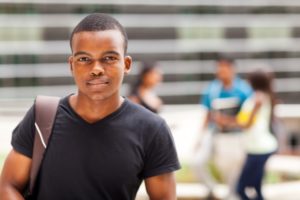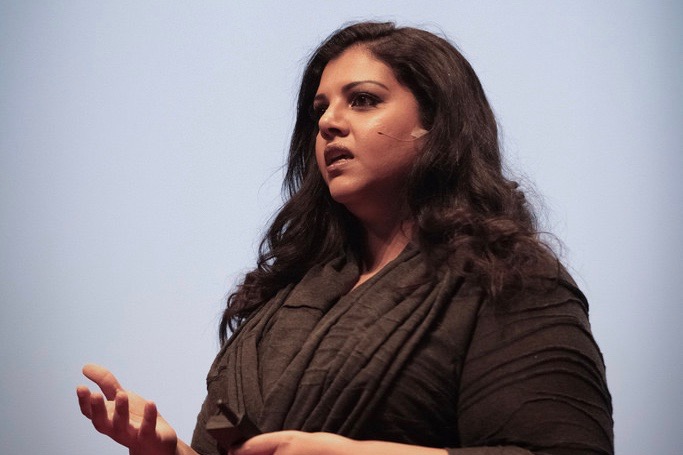In the wake of school shootings, two teachers initiate secret kindness projects. Could such programs help neutralize the powerlessness that drives acts of violence?


We never grow accustomed to the news of a school shooting; every time violence invades a place of learning, it feels like the sacred has been violated. This past spring, three lives were lost in two school shootings within a week. As families and communities grieve, many educators are asking themselves the question they always ask: “What can be done?”
Responses to these events vary. But in the aftermath of other school shootings, two teachers—at different schools, in different states—initiated campaigns of “secret kindness” that eventually went viral.
After the Sandy Hook shooting in 2012, high school teacher Ferial Pearson experienced a range of emotions from shock to grief to fear. According to a TEDx Talk Pearson gave in 2014, she was discussing the shooting with her children when her son said, “When people bully me, I get really mad… I just want to lash out at somebody, at something, I want to hurt somebody, but then just in time, when someone is kind to me, that feeling goes away.” And then Pearson’s daughter commented, “What if people had been kinder to the shooter at Sandy Hook? What if people had been nice to him his whole life? Maybe the shooting would have never happened.”
This sparked Pearson’s idea to recruit her students as “Secret Agents of Kindness.” Her plan was that each week, they would draw an envelope containing an act of kindness and perform it as secretly as possible. Pearson’s high school juniors were enthusiastic about the proposal and went through a process of assessing risks, planning an agent-initiating ceremony, assigning each other secret agent names, and brainstorming a list of secret acts of kindness. These ranged from writing a letter to a classmate who tended to “fall under the radar,” to sitting with someone at lunch who was alone, to picking up litter after school every day. The only rules were that the acts of kindness couldn’t cost any money, and they had to be performed on school grounds because that was the culture Pearson’s class was seeking to change. Pearson required the students to journal about the experience every week.
In 2018, middle school teacher Justin Parmenter’s decided to institute a kindness campaign of his own when a freshman shot and killed a classmate at a school in his district. Parmenter said he had “already been thinking a lot about the decline in positive interactions in our society and how we might more effectively teach character in our schools. But this local act of gun violence added a new sense of urgency to my goal of building community and cultivating kindness between students.”
In Parmenter’s project, “Undercover Agents of Kindness,” his students drew the name of a classmate and then had two weeks to perform an unexpected act of kindness. Students who were barely acquainted began surprising each other with treats, complimenting one another, studying together, and helping carry books and musical instruments to class.
In both Pearson’s and Parmenter’s classes, students described feeling awkward about approaching someone they didn’t know well. However, a number of them said the kindness exercise positively affected their personal interactions, built stronger relationships between classmates, and inspired patience and forgiveness. Pearson said, “We became a family. We became braver. We became more loving. We couldn’t wait to come to school. We couldn’t wait to make someone’s day just by smiling at them.”
Interestingly, both Parmenter and Pearson mentioned the idea of power in reflecting on their students’ experiences.
“I wanted them to feel this sense of empathy,” Pearson said, “to understand how good it feels to be kind to people, to build a habit of kindness, to understand that they—as young as they were, as resource-less as they were monetarily—that they had some power.”
Similarly, Parmenter said that in his students’ written reflections on kindness, “… almost every time they added that they were proud of themselves… and felt the power in brightening someone else’s day.”
It is not wholly unsurprising that both teachers chose the word “power” to describe one of the byproducts of the kindness projects. Power is a commodity in short supply to teenagers, but which they crave.
Murray Milner, Senior Fellow at the Institute for the Advanced Studies in Culture and author of the book Freaks, Geeks, and Cool Kids, studied teenage culture and its often pain-inflicting clique structures. He summarized some of his findings as follows: “Why this near obsession with status? It is because they have so little real economic or political power. They must attend school for most of the day and they have only very limited influence on what happens there… They do, however, have one crucial kind of power: the power to create an informal social world in which they evaluate one another.”
According to Milner, those “obsessive, superficial, and often mean-spirited” status concerns are rooted in a deep sense of powerlessness. When students feel powerless, they act out in a number of ways—sometimes even violently. Milner closes his book with some suggestions to reduce preoccupation with status by increasing teenagers’ real-world power, from internships to a lower voting age to youth representation on boards of public agencies.
Such ideas necessitate structural and even legal reforms that educators are unable to effect on their own. But what if simply requiring students to practice kindness could also instill a sense of power?
The question of what drives a person to an act of violence is complex and initiates discussions about abuse, mental health, gun access, and the idolization of previous school shooters. Clearly there is not any one single cause. But according to Peter Langman, a psychologist who has studied mass shooters, “These kids often feel very powerless. The one way they can feel like they’re somebody, that they’re a man, is to get a gun and kill people.”
It is impossible to head off every school shooting. But perhaps in a teenage world that is rife with this sense of powerlessness—sometimes with deadly results—the power of kindness could offer a two-fold relief. Maybe the cumulative effect of giving and receiving kindness could help quell the rage and despair some students experience. What kind of difference might it make if all students were consistently complimented, helped, and befriended as part of a school’s culture? At the same time, maybe experiencing the power that comes from practicing kindness could help dismantle this sense of powerlessness. Programs that inspire the exercise of kindness won’t solve the epidemic of school shootings, but maybe they will tip the balance for a few students. Doubtless, they have the potential to make our schools happier, stronger, and healthier for all.